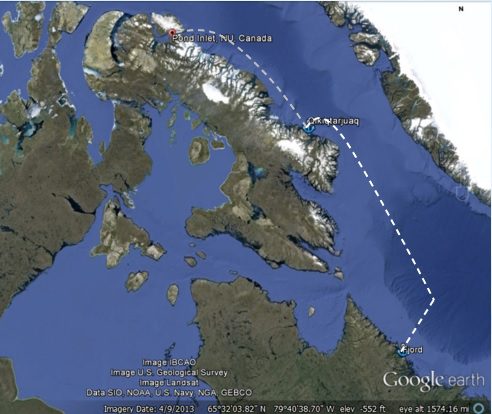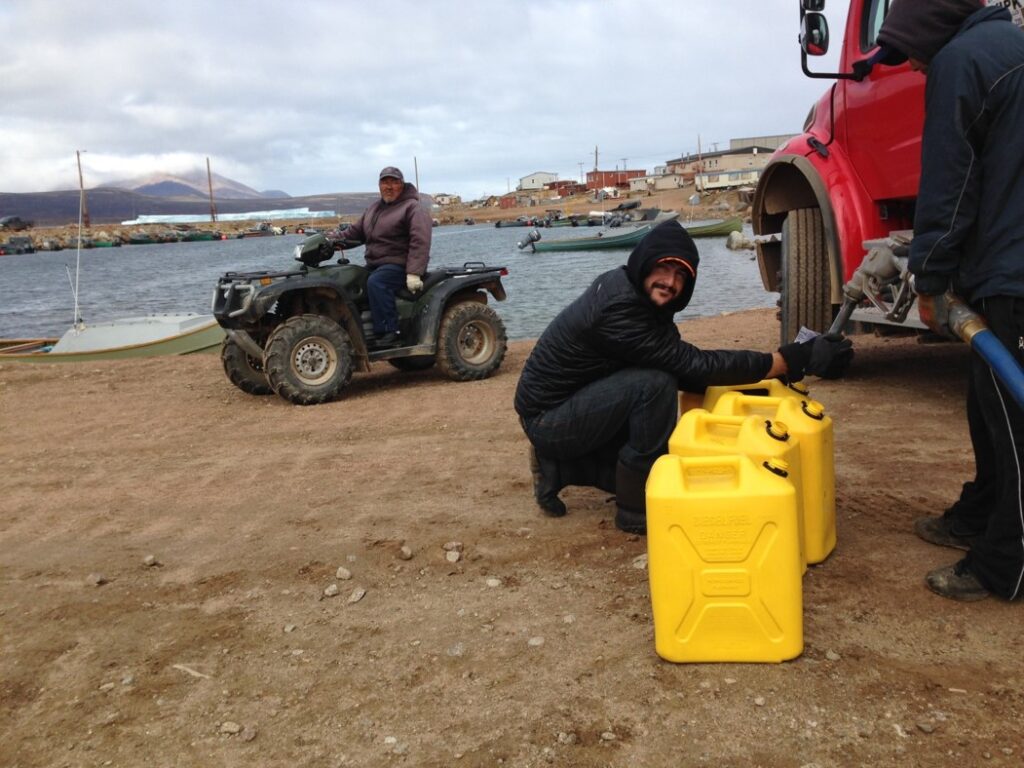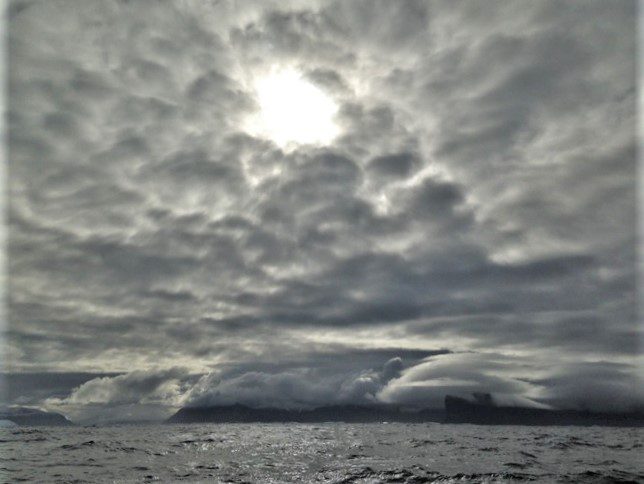Below the Arctic Circle
Saturday September 6, 2014 .. week 11 (65o 54’N 60o 20’W): In the Davis Strait.

Early this morning, around 1:30 AM, we crossed southward over the Arctic Circle [66o 33’]. Good to be back in the sub-Arctic. Next major milestone will be Cape Chidley on the tip of Labrador, 350 miles to the southwest, unless we decide to bypass it and keep going directly south from here, in which case the next landfall will be in 750 miles. Weather and the lure of a stop-over on the Labrador coast will dictate.
Thursday we stopped at the town of Qikiqtarjuaq on Broughton Island for fuel and a good night’s sleep, then left at the break of dawn the following day. Qikiqtarjuag which is the gateway to the Auyuittuq National Park, translates as “land that never melts” in the local Inuit language. The name is consistent with the snowcapped peaks and the gigantic icebergs in and outside the fiords. The park is a destination for experienced climbers with towering mountains and sheer faces, creating some of the most spectacular scenery we’ve seen yet.

Yesterday was a full day of vigorous sailing, occasionally dodging small calves from the larger icebergs around Broughton Island. Avoiding these bergy bits was no problem until night fell with no moon and a cloud cover. Larger ice shows up on radar and the Forward Looking Infrared, but ice chucks on the order of two meters or less are too small to be easily visible, yet are massive enough to be a concern. In Lancaster sound, I hit a bergy bit 1-2 meters in size while doing 5 knots and, while Lillian seemed non-the-worse for the encounter, the resulting shutter is not something I want to repeat.

Fortunately, by nightfall we seemed to be clear of the ice concentration around Broughton, but we still took the precaution last of slowing the boat down once it became dark. (As our former crew member and high school math teacher Dave Johanson pointed out, the energy of the boat is a function of the velocity squared, such that a boat at 2.5 knots has one quarter of the energy as compared with the same boat at 5 knots.)
As it turned out, slowing her down was not easily done, with the winds 25-30 knots and the seas greater than 2 meters. In the end, the solution was to take down all the sails and run on bare poles, giving an acceptable 2.5 knots through the water. Keeping watch, we did not see any ice, but last night’s slow speed combined with large waves, made for an uncomfortable eight hours as the boat wallowed from side to side. But, as they eventually do, conditions improved and by dawn, the wind and waves had calmed down, the skies cleared, and we are currently sailing along smoothly, not having had to use the engine since leaving Qikiqtarjuag. Next few days, the winds are predicted to be light, so we may be motoring again. In any case, we’re taking it one watch at a time.